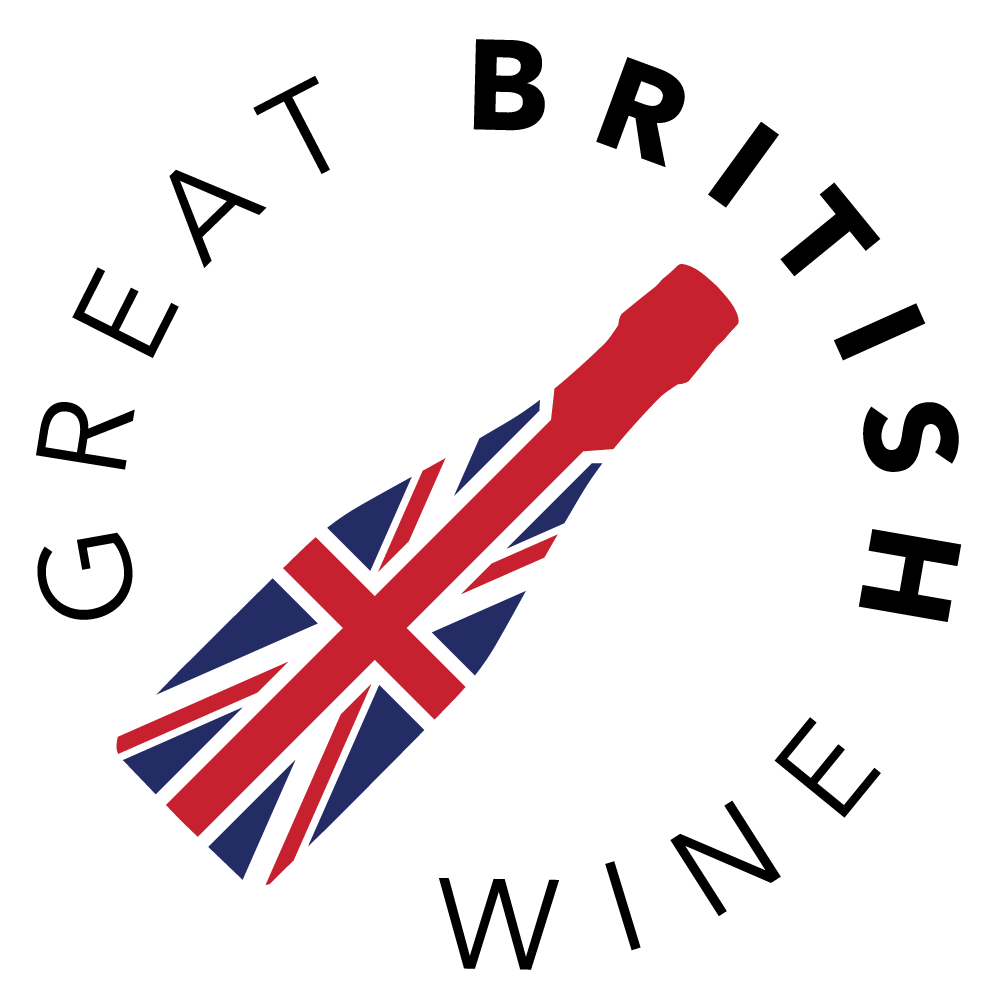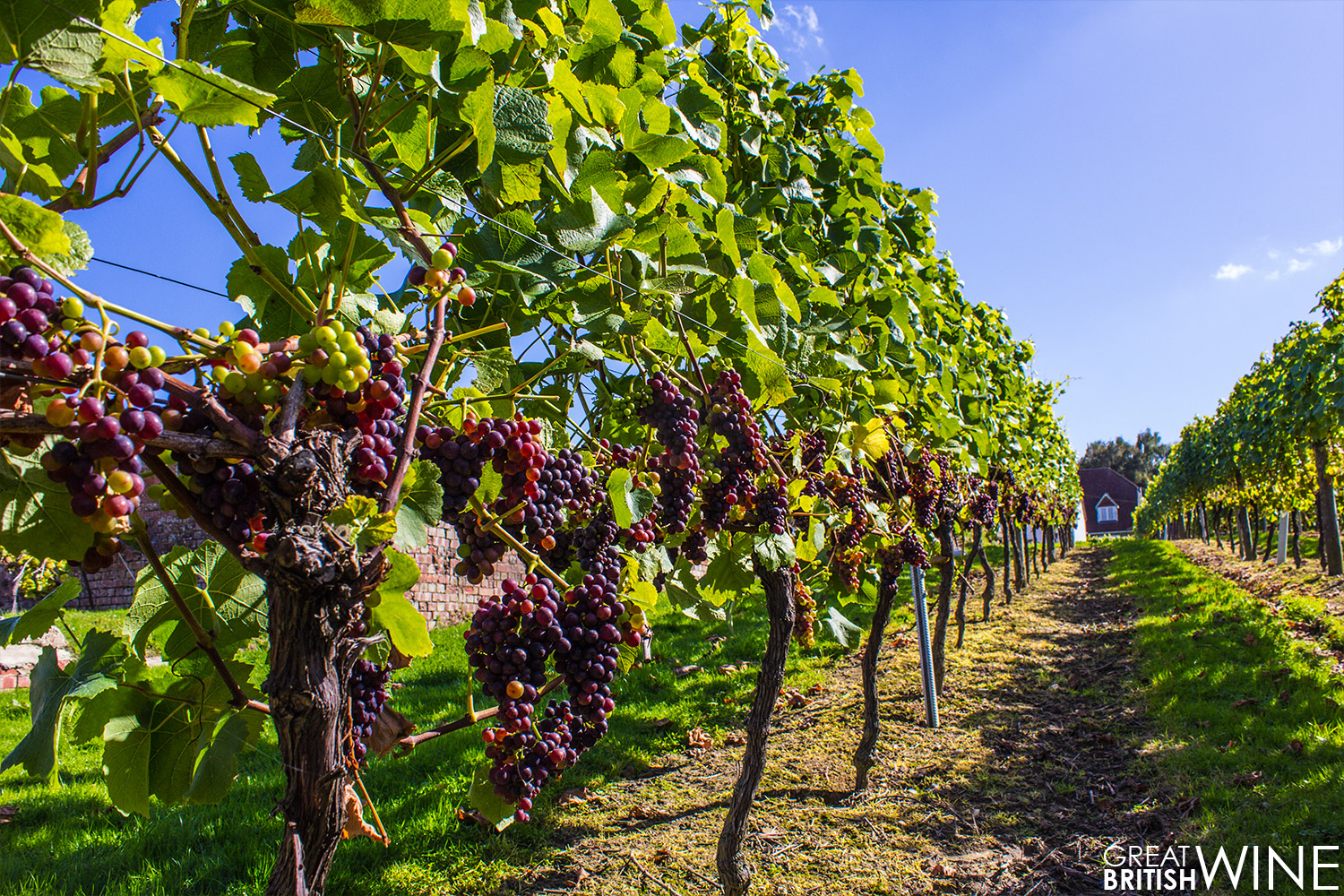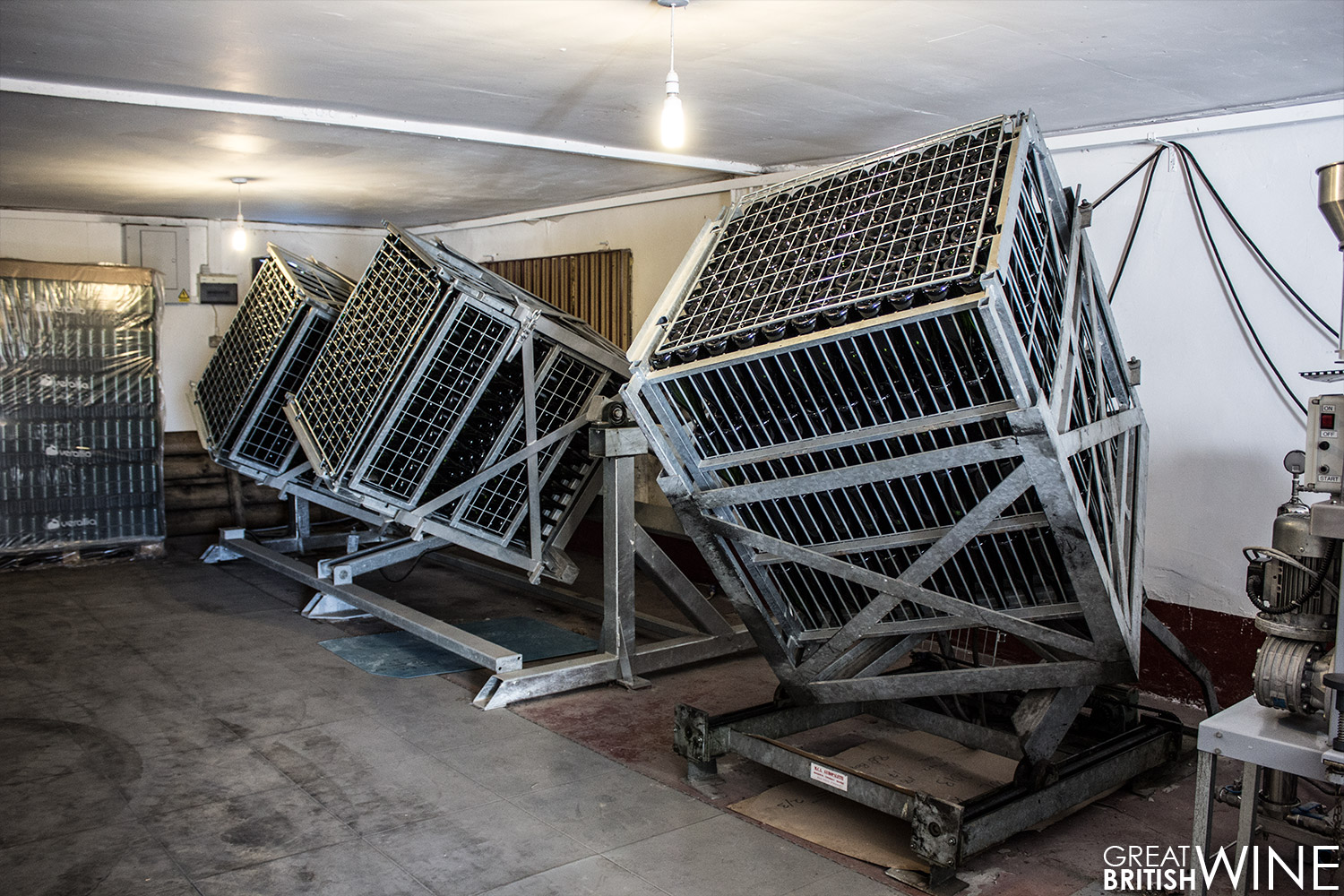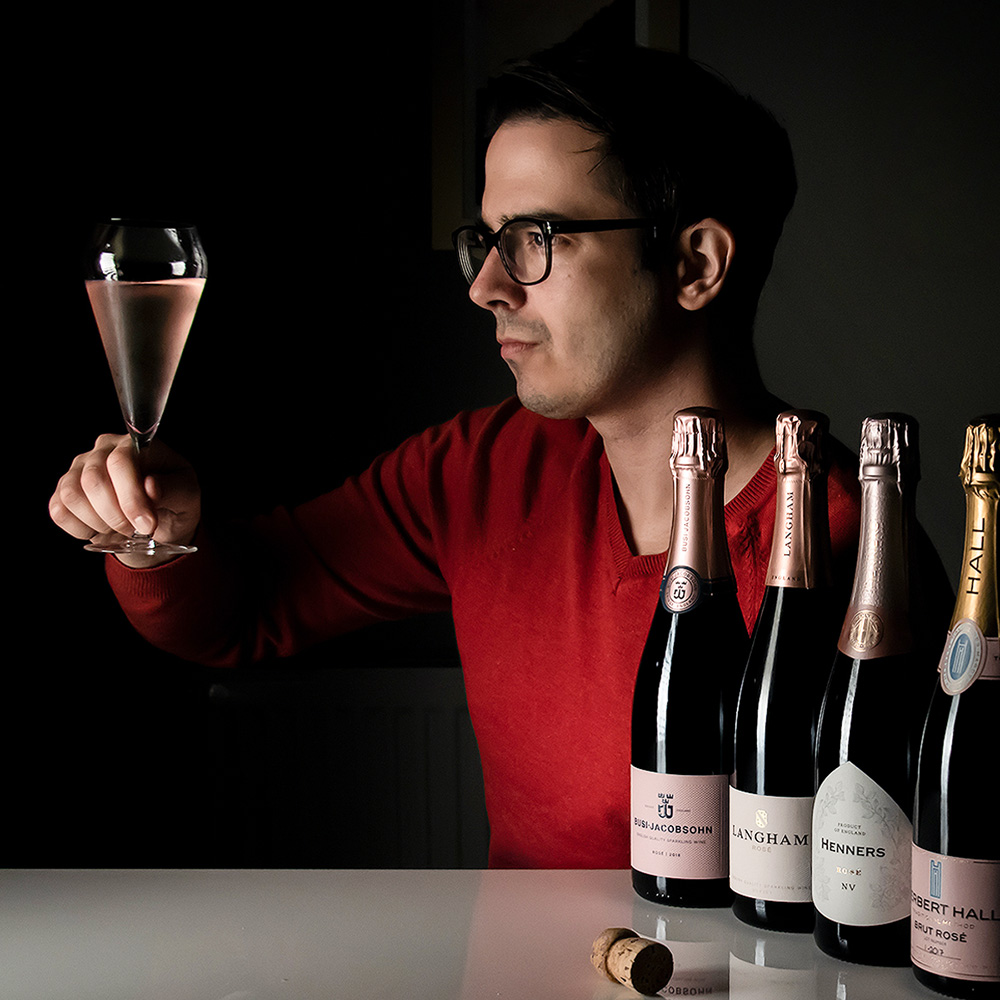
Date Visited: Saturday 27th September 2015
Website: bluebellvineyard.co.uk
Location: Furners Green, East Sussex
Entry Price: Tours available for groups of four for £14.00 / person
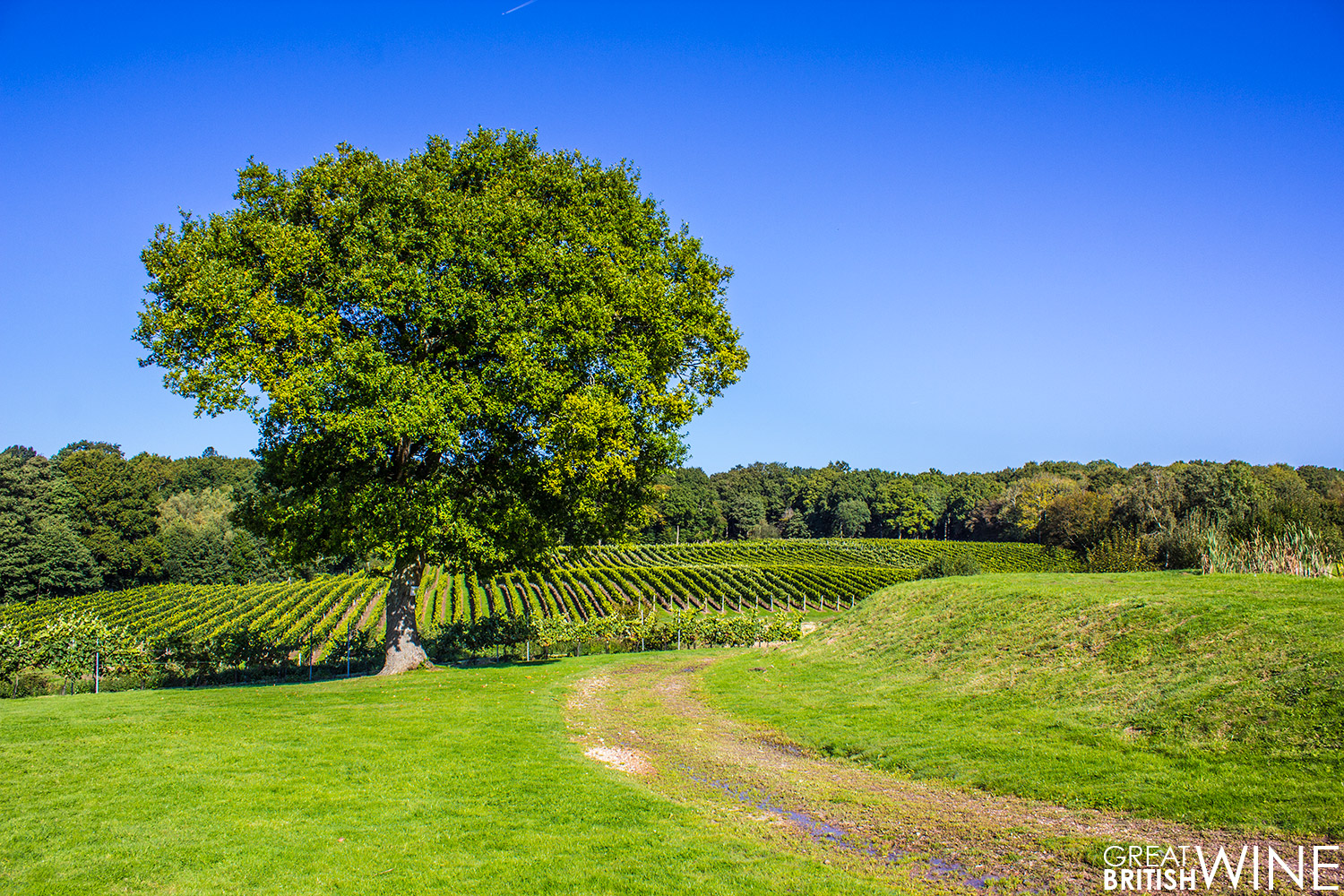 As I drive through the narrow country lanes, capturing the first glimpse of the vines of Bluebell I can’t help but feeling the excitement about the prospect of a tour of one of the top English Sparkling Wine producers in the country. The morning couldn’t be more perfect; we are in the middle of an intense spell of early autumn sunshine, this weather is just what England needs right now for another great vintage. As I arrive at Bluebell I’m greeted by both clear blue skies and a very friendly welcoming from Collette O’Leary. She’s been with Bluebell for 6 months, is a graduate from Plumpton College and former winner of Plumpton College M&S Scholarship 2013, producing the Plumpton Estate Red exclusively for M&S.
As I drive through the narrow country lanes, capturing the first glimpse of the vines of Bluebell I can’t help but feeling the excitement about the prospect of a tour of one of the top English Sparkling Wine producers in the country. The morning couldn’t be more perfect; we are in the middle of an intense spell of early autumn sunshine, this weather is just what England needs right now for another great vintage. As I arrive at Bluebell I’m greeted by both clear blue skies and a very friendly welcoming from Collette O’Leary. She’s been with Bluebell for 6 months, is a graduate from Plumpton College and former winner of Plumpton College M&S Scholarship 2013, producing the Plumpton Estate Red exclusively for M&S.
Bluebell Vineyard was formerly a pig farm known as Glenmore Farm, purchased by Barry & Joyce Tay in 1982. It wasn’t until 2005 when the first vines were planted and the focus turned from swine to wine. The decision was made to focus on English Sparkling Wine, so the vines of choice were (as you would expect) Chardonnay, Pinot Noir and Pinot Meunier, together with Seyval Blanc. With now 25 hectares of land under vine and three separate vineyards, it is clear to see that the enterprise is really starting to blossom into something great. The vines are set out a little differently to some vineyards, with alternating sequences of typically 6-7 rows of individual varieties and clones. As well as helping to limit the risk of disease spread, this methodology also helps to optimise the harvesting, ultimately allowing for the harvest of individual clones.
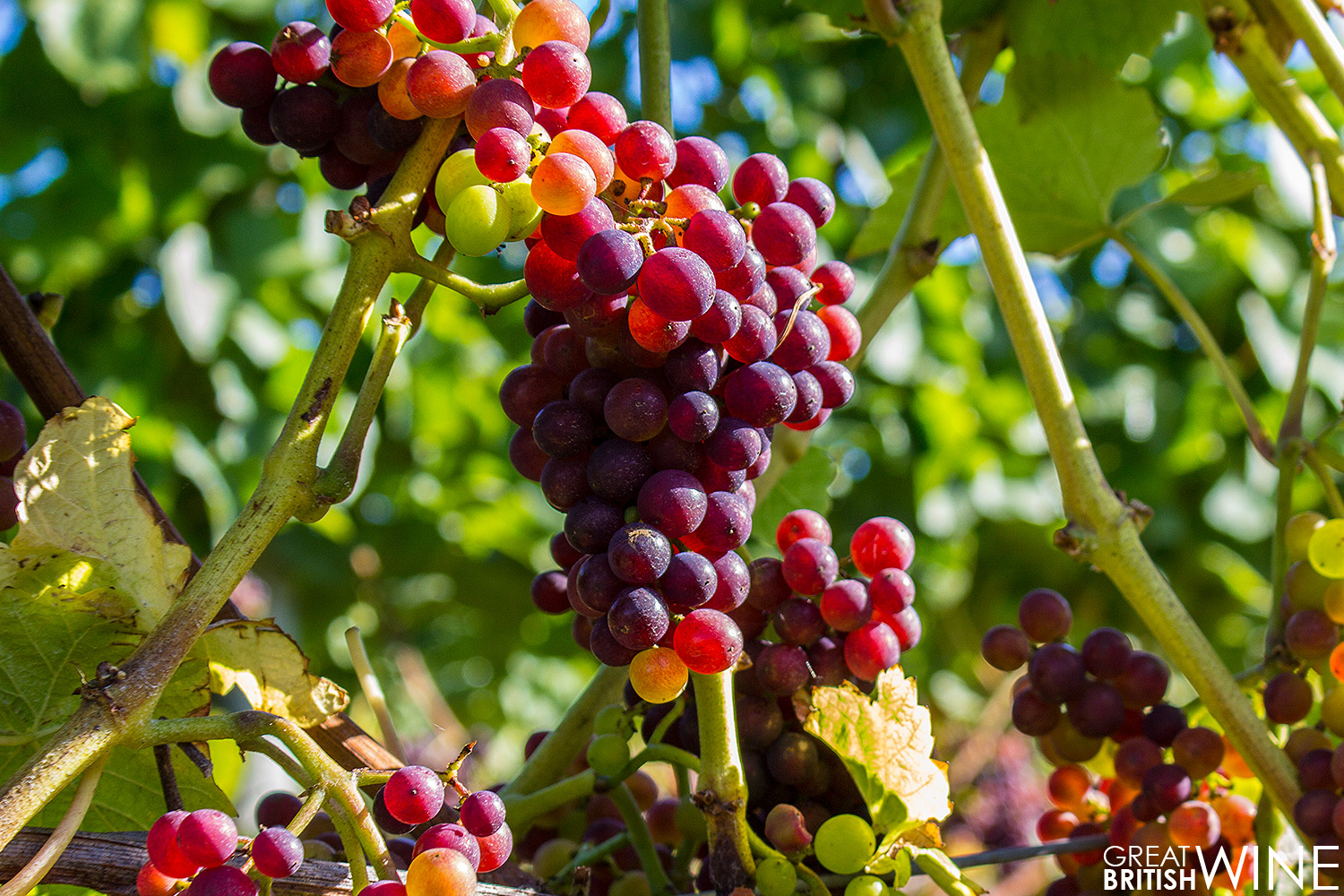 Production of sparkling wine has grown from 20,000 bottles annually to currently around 50,000 bottles, with the ultimate plan to increase to over 150,000 bottles a year. The current line-up of wines includes a Classic Cuvée, a Brut Rosé, a Blanc de Blancs as well as a single varietal Seyval Blanc. Whilst the focus over the last 10 years has been solely to produce Sparkling wines, work is currently underway to develop a range of still wines. The still wine range will make up just 15% of total wine production, potentially including single varietal Chardonnay, Bacchus and a rosé blend.
Production of sparkling wine has grown from 20,000 bottles annually to currently around 50,000 bottles, with the ultimate plan to increase to over 150,000 bottles a year. The current line-up of wines includes a Classic Cuvée, a Brut Rosé, a Blanc de Blancs as well as a single varietal Seyval Blanc. Whilst the focus over the last 10 years has been solely to produce Sparkling wines, work is currently underway to develop a range of still wines. The still wine range will make up just 15% of total wine production, potentially including single varietal Chardonnay, Bacchus and a rosé blend.
With a yield of approximately 2.5-3 tonnes per acre, approximately half of that compared to typically 4.5-5 tonne yields achieved in the Champagne region, it’s clear to see the contributors towards the perceived premium pricetag of many English sparkling wines. Typically a 60% yield of grape juice is achieved during pressing, with the wine then being transferred into small tanks of juice from individual parcels for cool ferment between 10oC-12oC. The cool ferment is a stylistic choice to protect the key fruity English characteristics and flavours that Bluebell embrace in their wines.
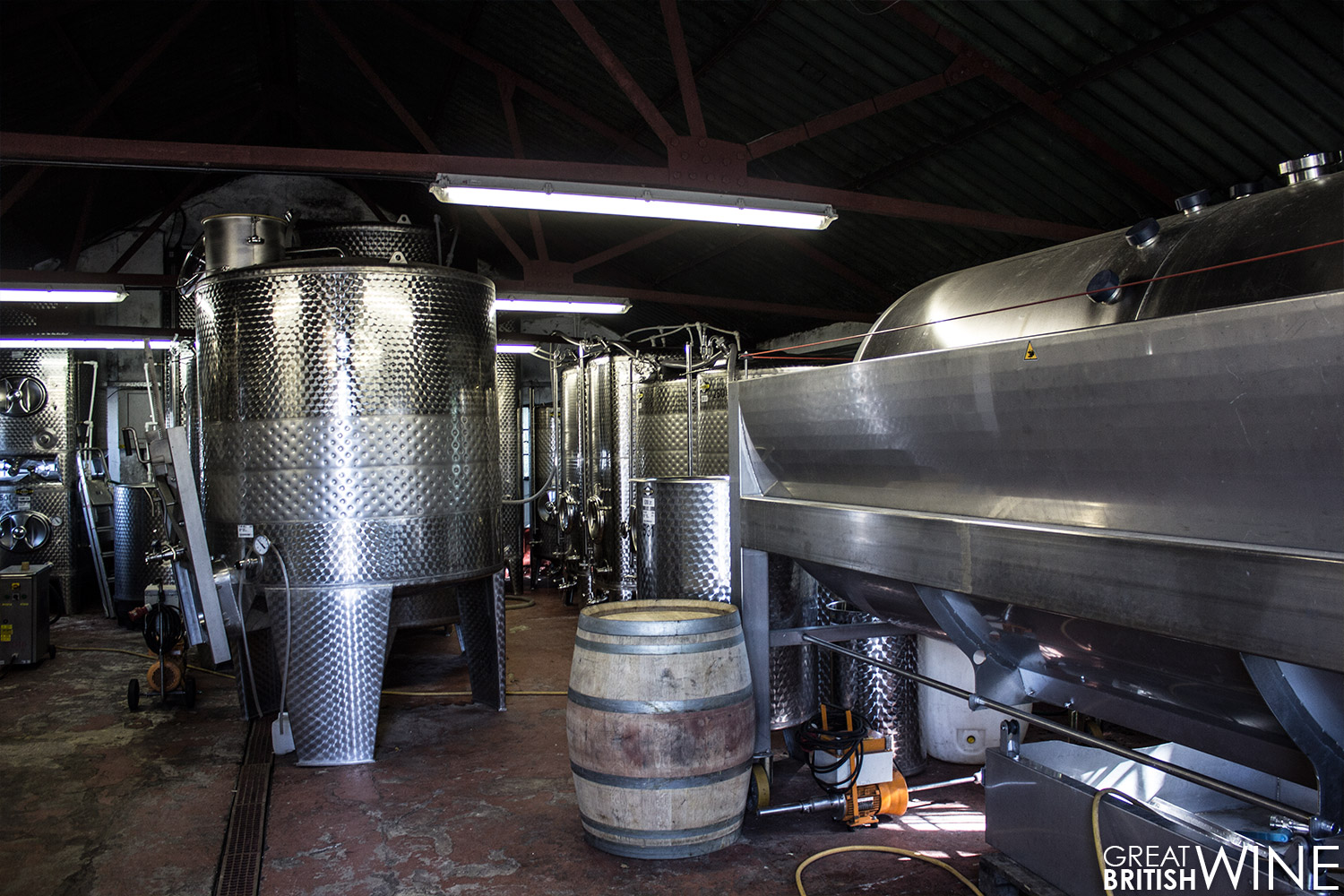 Walking around the winery on site at Bluebell it is clear to see they have expanded rather quickly over the last few years. Whilst the substantial array of smaller steel tanks offers flexibility in processing in small batches, it is actually a little bit of a bottleneck in the current process. There are plans to expand the winery into one of the larger sheds, this will be integral to allow the growth plans to succeed. In another of the sheds is the riddling & disgorging room (pictured at the end of this article), firstly comprising of an array of gyropalettes for synchronised riddling. Then there is the bottle neck-freezing machine and semi manual disgorging machine where the frozen yeast residue is expelled before the final cork closure is applied. I really do have to get a winery one day during bottling, as it must be fascinating to see.
Walking around the winery on site at Bluebell it is clear to see they have expanded rather quickly over the last few years. Whilst the substantial array of smaller steel tanks offers flexibility in processing in small batches, it is actually a little bit of a bottleneck in the current process. There are plans to expand the winery into one of the larger sheds, this will be integral to allow the growth plans to succeed. In another of the sheds is the riddling & disgorging room (pictured at the end of this article), firstly comprising of an array of gyropalettes for synchronised riddling. Then there is the bottle neck-freezing machine and semi manual disgorging machine where the frozen yeast residue is expelled before the final cork closure is applied. I really do have to get a winery one day during bottling, as it must be fascinating to see.
After a tour of the winery, we move onto the most important part – the wine tasting. Collette has an array of wines for me to try, starting with the Brut Rosé before moving onto two vintages each of the Classic Cuveé and the Blanc de Blancs. Tasting all of the wines side by side like this is a really accurate way to get used to the nuances between both vintage and blend. The whole range was excellent, and the winemakers trademark style of crisp English fruity freshness was evident in all the wines in varying degrees of intensity. Both Blanc de Blancs were my firm favourites, and you can find my full tasting notes for all five wines tasted below.
Thanks once again to Collette and the Bluebell team for their excellent tour and hospitality.
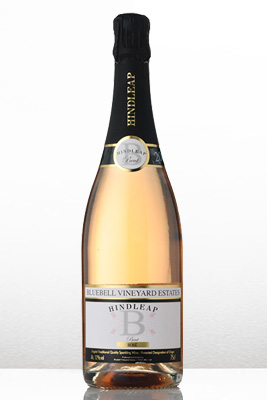
Brut Rosé 2011
Grapes: Pinot Noir, Pinot Meunier & Chardonnay Price: £24.99
The 2011 Rosé from Bluebell is the lightest wine in the range, and is a Chardonnay rich (52%) blend with 24% each of Pinot’s Noir and Meunier.
Quite fruity on the nose with red fruit, honeyed notes, hints of apricot and fresh a citrus air.
On the palate this wine is remarkably clean with a focus on the fresh citrus character combined with light red berry flavours.
Very slightly off-dry with hints of sweetness, it’s a very easy drinking aperitif style sparkling wine.

Classic Cuvée 2009
Grapes: Pinot Noir, Pinot Meunier & Chardonnay Price: £23.99
The 2009 vintage of this blend of the classic Champagne grape varieties typifies Bluebell’s cool-ferment characteristics of freshness and clarity.
Like the rosé, this wine has a very fresh clean nose; lots of green apple notes and rich with citrus.
The palate follows through with this clean characteristic with green orchard apples and citrus being the dominant flavours. There’s also a curious aftertaste with a mix of slight mineral and melon notes.
Very clean, but I felt it lacked a little complexity compared to the other wines in the range.

Classic Cuvée 2010
Grapes: Pinot Noir, Pinot Meunier & Chardonnay Price: £23.99
The 2010 is a richer and more complex offering compared to the fresher 2009 vintage. This added weight is largely down to the extended lees contact – 30 months in this case.
Whilst there’s that familiar apple & lemon freshness, this wine has a richer and more rounded nose with stone fruit and baked apple pastry aromas.
Likewise, this wine is a little heavier on the palate with a really rich creamy biscuity character that complements the richness and acidity.
Of all the wines from Bluebell, this is the closest to a decent classic Champagne in both flavour and texture. Excellent!
Blanc de Blancs 2010
Grapes: Chardonnay Price: £23.99
Out of the five wines I tried at Bluebell, this one just reached out and grabbed my attention.
Beautiful rich golden colour in the glass, this has a fuller nose than the 2011, with baked apple, stone fruit, lemon and hints of almond.
Palate has a complex nuttiness, it’s dry but there’s this profound fruity streak of tangy apple running through everything. Really vibrant, lots of citrus and then hints of honey and pastry – it’s absolutely delicious!
At £24/bottle it may be the best value English BdB I’ve had so far.
Blanc de Blancs 2011
Grapes: Chardonnay Price: £23.99
I’m really impressed with both vintages of the Blanc de Blancs I tried at Bluebell, and whilst the 2010 just had the edge, this was also fantastic.
Nose is really rich, lots of English apple freshness, hints of stone fruit, citrus and lovely yeasty notes thanks to extensive lees aging.
There’s a really refined elegance in this wine, with a lovely rich baked pastry palate, big dose of apple and hints of ripe sweetness. The lengthy finish rounds off another excellent vintage.

